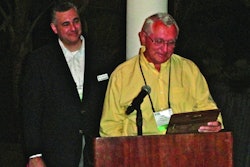Once you understand the forces that influence consumer shopping patterns, it becomes important to understand how they shop and why they make the purchasing decisions they do. Eye tracking is one of the key ways to gain the knowledge you'll need to shape an effective package design.
You’ve created multiple mockups for your rigid package, and you need to determine the best design option. Foremost, you want to answer two questions:
-
Which design provides the most shelf visibility?
-
What elements on your package did shoppers see, and for how long?
Eye tracking is one approach that can provide these answers.
“The potential loss of sales to a business by diluting their equity and getting lost on shelf is enormous, and it’s not a risk one wants to take in this day and age,” says Pamela Waldron, global director, Oral Care, in Johnson & Johnson’s Global Strategic Insights Group. “We use eye tracking frequently to assess new label design for major brands. We would not implement a graphic label design change without understanding its impact on visibility and imagery,” which extends to how well the label and the package—a glass bottle or plastic container, for example—complement each other.
Eye tracking can be done in at least two ways:
-
If the goal is to measure shelf visibility of a rigid package, individual consumers can view a series of store scenes in which store shelves are presented on a screen. Consumers view categories as if they were shopping, and using a joystick, they click to navigate between categories. Their eye fixations are recorded and used to produce a heat map showing the areas on a package or shelf that drew the most fixations.
This type of eye-tracking research confirmed P&G’s belief that creating blue blocking would improve visibility for its Pantene Aqua Light conditioner in Western Europe. The light-blue pack the company had been using was too visually recessive on shelf.
-
If the objective is to understand shoppers’ in-store habits, a mobile approach can be used in which the shopper wears a special pair of glasses to record viewing data while shopping.
“You cannot close the sale unless somebody has seen the package first on the shelf,” says Christian Simms associate director of consumer market knowledge at Procter & Gamble. “With eye tracking, you can determine if you are stopping consumers with your product.”
Some CPG companies conduct their own eye-tracking research, but this requires a substantial capital investment for special glasses and other equipment used in conducting the studies. More often, brand owners takes either of two forms approach research companies, who work with a cross-functional team at the CPG company that includes members of marketing, branding, and R&D.
Insights on eye tracking
Here are four tips for conducting an eye-tracking study:
1. Define the questions to be answered (i.e., .Do shoppers see the product on shelf? How much attention did the product get, compared with competing products?)
2. Define experimental details from exposure time (timed or shopper controlled), stimulus (mock-ups or renderings), and experimental design issues such as randomization, sample size, and scripts/prompts.
3. Conduct a pilot test to ensure that the prompts and environment elicit the interaction desired.
4. Test full items in realistic environments, if possible, for maximum validity.
Insights on eye tracking1. 2. 3.4.

























